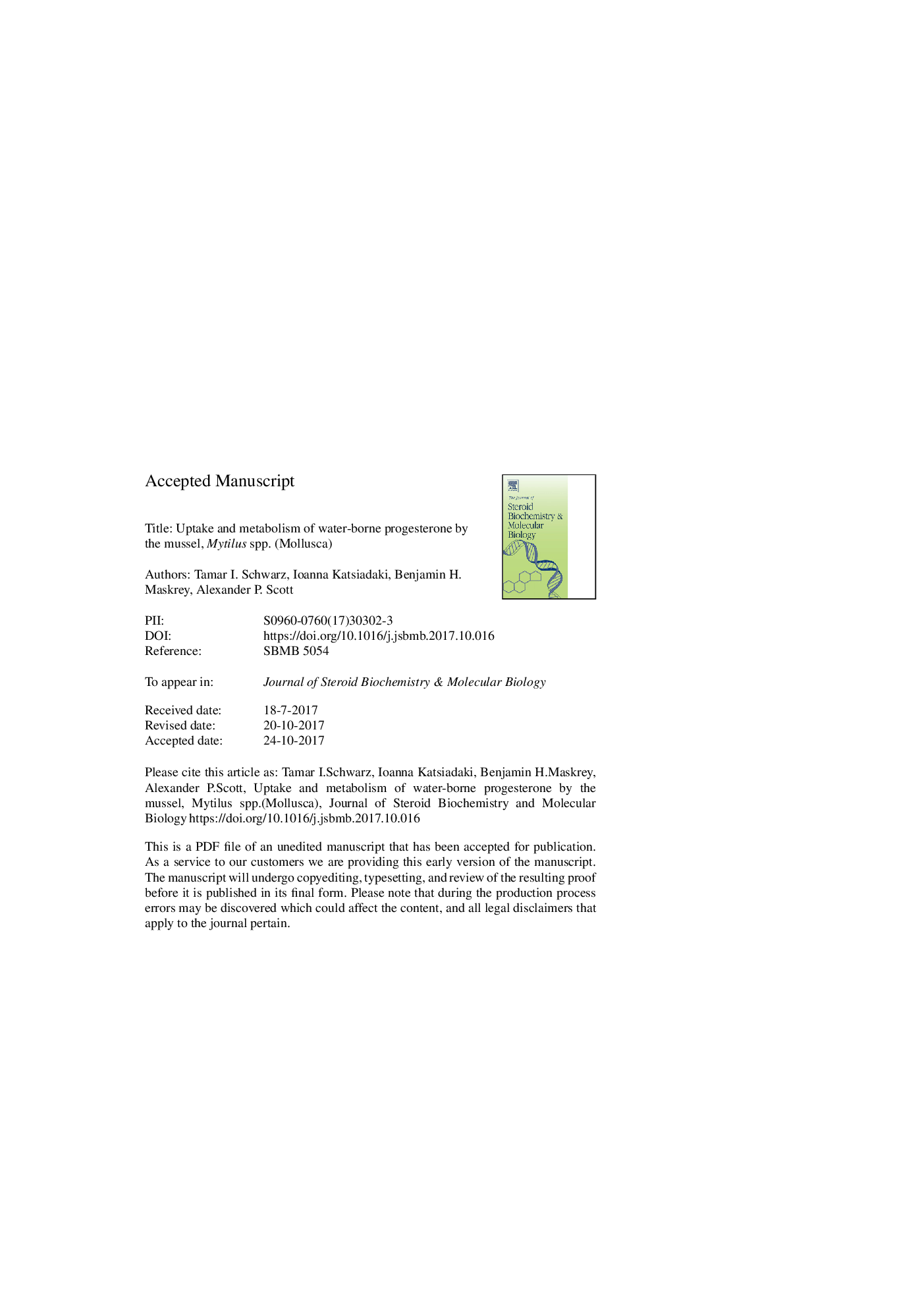| کد مقاله | کد نشریه | سال انتشار | مقاله انگلیسی | نسخه تمام متن |
|---|---|---|---|---|
| 8337826 | 1540969 | 2018 | 39 صفحه PDF | دانلود رایگان |
عنوان انگلیسی مقاله ISI
Uptake and metabolism of water-borne progesterone by the mussel, Mytilus spp. (Mollusca)
دانلود مقاله + سفارش ترجمه
دانلود مقاله ISI انگلیسی
رایگان برای ایرانیان
کلمات کلیدی
موضوعات مرتبط
علوم زیستی و بیوفناوری
بیوشیمی، ژنتیک و زیست شناسی مولکولی
زیست شیمی
پیش نمایش صفحه اول مقاله

چکیده انگلیسی
Previous studies have shown that mussels can pick up 17β-estradiol [E2] and testosterone [T] from water, metabolize them and conjugate them to fatty acids (esterification), leading to their accumulation in tissue. A key requirement for the esterification process is that a steroid must have a 'reactive' hydroxyl group to conjugate to a fatty acid (which in T, and probably E2, is the β-hydroxyl group on carbon 17). Progesterone (P) lacks any hydroxyl groups and theoretically cannot be esterified and hence should not accumulate in mussels in the same way as E2 or T. However, it is already known that mussels have an enzyme that can achieve 5α-reduction of the A ring of T and P and that there is also another reductase that can transform the 3-oxo group of the 5α-reduced A ring of T into a hydroxyl group. We hypothesized that, although intact P cannot be directly esterified, it might nevertheless be transformed into metabolites that can. To test this hypothesis, we investigated the rate and capacity of uptake, metabolism and potential depuration of tritiated P by the common mussel, Mytilus spp. We found that tritiated P was taken up from water at a similar rate to E2 and T (mean clearance rate 49 mLâ1 animalâ1 hâ1) and that, as found with the other steroids, the rate of uptake could not be saturated by the addition of non-radioactive steroid (even at 7.6 μg Lâ1). We found that up to 66% of the radioactivity that was taken up was present in the ester fraction, suggesting that hydroxylation of the P must indeed have occurred. We then definitively identified two metabolites in the ester fraction: 5α-pregnane-3β,20β-diol and 3β-hydroxy-5α-pregnan-20-one. These same two steroids were also present in the free steroid fraction. Intact P was not detected in either of the fractions. When undergoing depuration (under semi-static conditions), the radioactivity in the ester fractions remained at the same concentration in the animals for at least 10 days. Our findings suggest that the lack of reactive hydroxyl groups on P does not preclude it from being taken up, metabolized and subsequently stored. Many questions remain, not least of which is why, when P seems to be so rapidly metabolized, two previous studies on mussels have reported concentrations of up to 30 ng gâ1 wet weight of P in their flesh.
ناشر
Database: Elsevier - ScienceDirect (ساینس دایرکت)
Journal: The Journal of Steroid Biochemistry and Molecular Biology - Volume 178, April 2018, Pages 13-21
Journal: The Journal of Steroid Biochemistry and Molecular Biology - Volume 178, April 2018, Pages 13-21
نویسندگان
Tamar I. Schwarz, Ioanna Katsiadaki, Benjamin H. Maskrey, Alexander P. Scott,